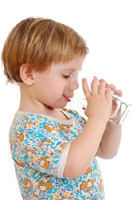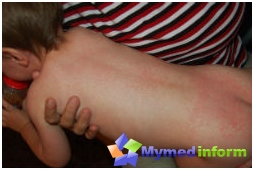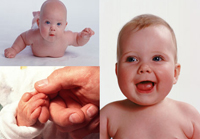Often, parents are heard of such a diagnosis as acetional syndrome. What are the symptoms and treatment of acetional syndrome? How to prevent this disease?
Content
Acetional syndrome
Acetone, or acetional crisis - develops in a child as a result of accumulation in the blood of a large number of ketone bodies. If the acetional crises are repeated, then they are talking about acetional syndrome. Ketone bodies are chemical compounds formed in the liver of foodstuffs entering the body. Almost all fats and some proteins contribute to the formation of ketone bodies, and almost all carbohydrates prevent this, and with properly balanced nutrition, the concentration of ketone bodies in the blood remains stable.
This is a special body response associated with metabolic disorders when an increase in uric acid concentration is noted in the body.
Children have such a state can cause:
- Infection
- Food Loads (Fatty Food)
- binge eating
- Unusual food
- Psycho-emotional stress
Symptoms of acetonemic syndrome
 multiple or indomitable vomiting for 1-5 days (an attempt to drink or feed a child provokes vomiting);
multiple or indomitable vomiting for 1-5 days (an attempt to drink or feed a child provokes vomiting);
- acetone smell of mouth, dehydration and intoxication (skin pallor with a characteristic blush, hypodynamia, muscle hypotension);
- Anxiety and excitement at the beginning of the crisis are replaced by lethargy, weakness, drowsiness, in rare cases. Possible symptoms of meningism and convulsions;
- Hemodynamic disorders (hypovolemia, weakening of cardiac tones, tachycardia, arrhythmia);
- spastic abdominal syndrome (grasp or stubborn abdominal pains, nausea, stool delay);
- The increase in liver is 1-2 cm, which persists within 5-7 days after the crisis relief;
- increase body temperature up to 37.5-38.5 degrees;
- the presence in the urine, vomiting masses, exhaled air acetone, in the blood - an increased concentration of ketone bodies;
- hypochloremia, metabolic acidosis, hypoglycemia, hypercholesterolemia, beta-lipoprotehemia;
- In the peripheral blood temperate leukocytosis, neutrophilosis, moderate increase in SE.
- Give adsorbent (activated carbon or enterosgel).
- Giving drinking weak tea or not carbonated water every 5-7 minutes 50 ml - it will stop dehydration.
- Feed a child during an attack is not recommended, you can give a little rusty crackers. After the disease, stick the diet.
- It is impossible to roasted, sharp, oily, carbonated water, chocolate, eggs.
Treatment of acetonemic syndrome in children
 It can be divided into 2 stages: the relief of acetional crisis and carrying out measures for the prevention of relapses.
It can be divided into 2 stages: the relief of acetional crisis and carrying out measures for the prevention of relapses.
At the first stage, it is necessary to wash the intestine 1-2% sodium bicarbonate solution and steal a child every 10-15 minutes. Sweet tea with lemon, non-carbonated alkaline mineral water (Luzhanskaya, Borjomi and DR.), 1-2% sodium bicarbonate solution, combined solutions for oral rehydration.
Medical therapy includes antispasmodics, enterosorbents (in the age dosage).
Excess acetone annoying a vomit, so it's not always. Then either injected fluids intravenously (dropper with glucose), or make a root of a controversial agent (for example, Cerukal) after which again actively nat.
Usually in children acetional syndrome takes up to 10 years.
The only unpleasant consequence to which this can lead is a decrease in blood pressure / glucose levels during the attachment of ARVI or other concomitant diseases.
You can simply remove such manifestations. Sugar-containing products
Prevention of the prevention of acetional syndrome
Breaks between eating hats should not be long. Concentrated brows, meat of young animals and birds, fatty varieties of meat, smoked, cauliflowers, tomatoes, oranges, and bananas, caffeine, beverages containing caffeine. Diet must prevail lactic acid products, cereals, fresh vegetables, fruits, boiled meat of non-fat varieties.
It is necessary to annually conduct a standard test for glucose tolerance, ultrasound of the kidneys and a hepatobiliary system, and in the presence of crystallar (urates, oxalates) determine the daily excretion of salts with urine.









